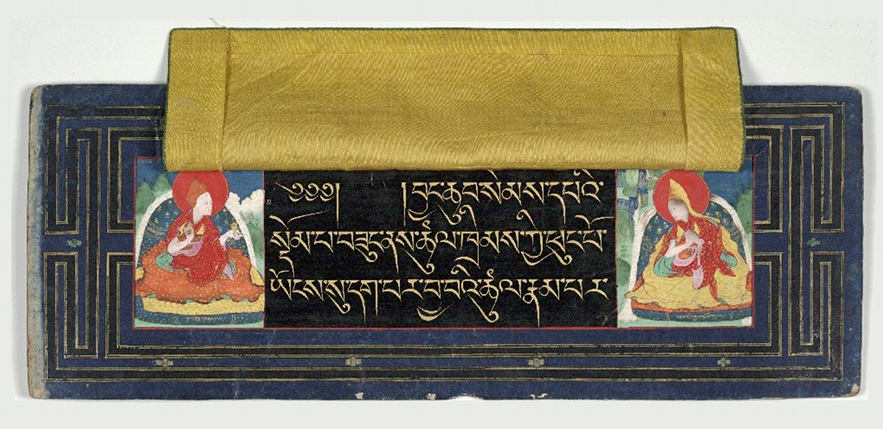
The Introduction of Printing and Digital Text Reproduction in Buddhist Societies
This project explores the relationship between Buddhist culture and technological transformations by looking at "the book" as artifact, medium for communication, symbol of political authority, and ritual object in the context of Tibetan Buddhism. It relies on an experienced team from previous AHRC-funded projects which includes members of the University of Cambridge, the British Library and Tibetan research institutions. Aiming at having a world-wide multidisciplinary appeal it is of interest to a broad range of academics and indigenous scholars engaged in the preservation of Tibetan cultural heritage and to all scholars involved in the rapidly growing international field of the history of the book.
Tibetan Book Culture
Tibetan book culture reflects Buddhist ideas that texts are relics and that their distribution is an act of merit. These ideas had a significant bearing on the invention of printing in 7th century China and on its later spread throughout East Asia and the Yuan Empire, including Tibet.

Inspired by the notion that books are embodiments of the words of the Buddha, Tibetans treat them as persons worthy of respect who can bestow blessings and act on people. These ideas and attitudes led to the adoption of printing technologies in Tibet and the development of a unique and unrivalled culture of books reaching far beyond the Tibetan plateau.
The Project
The project investigates two core issues: the introduction of block printing into Tibet, and the current use of digital technologies in the preservation of Tibetan collections. A preliminary survey of 15th-16th century Tibetan block prints showed that printing technologies promoted specialised craftsmanship and led to distinctive ways of mobilising people and resources. A Buddhist morality of the book propelled the development of networks of patronage involving rulers and members of lay and monastic communities, both within Tibet and beyond, in support of printing projects. Frequent political upheavals in the Tibetan areas resulted not in the destruction of Buddhist book culture, but in more sustained efforts to recover and preserve texts. Similarly after the Cultural Revolution (1966-76) networks of monks, nuns and lay scholars emerged to search for lost collections, re-order monastic archives and recover texts; an effort now being assisted by the adoption of digital technologies.
The project builds on two previous AHRC-funded projects: one brought to light some remarkable examples of early Tibetan printing kept in the UK (especially in the Younghusband Collection) and the other published the biography of a 15th century princess who played a seminal role in the introduction of printing in the Gungthang region of Tibet where ancient libraries are still in existence. A comprehensive survey of colophons of early prints, biographies and the living tradition in this region provided the basis for a broader exploration of the introduction of printing technologies into Tibet with their social and cultural ramifications. In addition, the project conducted an ethnographic investigation of the hitherto undocumented process of recovery and cataloguing of texts carried out by grass-root networks of monastic and lay scholars with the help of digital technologies. This pioneering study of cultural practices surrounding Tibetan printing technologies illuminates unexplored aspects of Tibetan Buddhist culture while providing valuable materials for comparative studies of the book.
